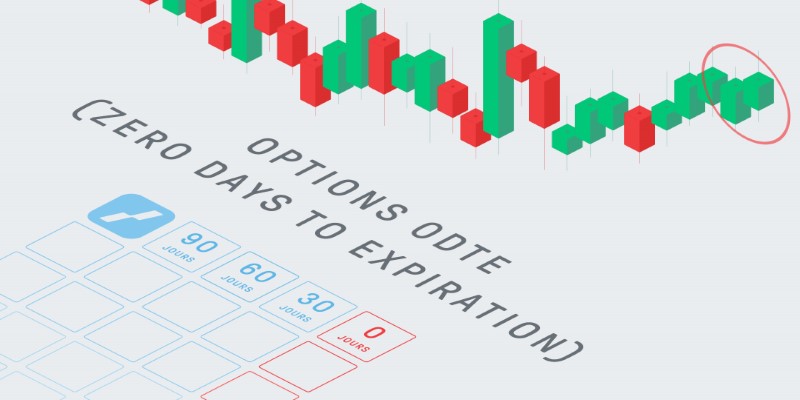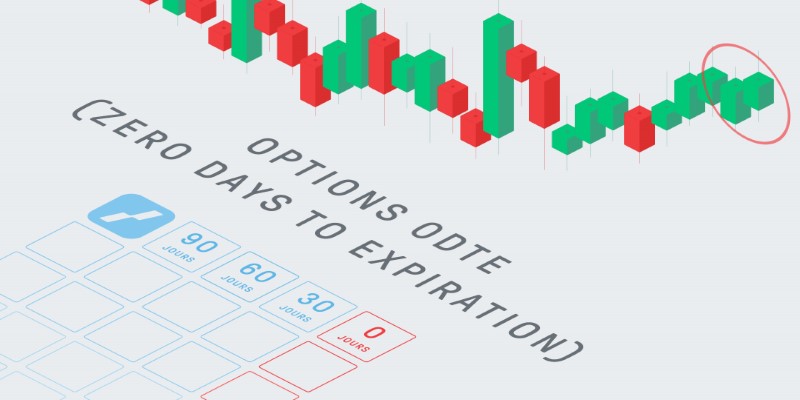What Are Zero Days to Expiration Options, and Why Are They Game-Changing?
Advertisement
Trading was always about timing, but Zero Days to Expiration options introduce a totally new level of intensity into the game. Those very short-term financial instruments gained increasing popularity among traders seeking instant income in hours instead of days or weeks. The lifespan of these 0DTE options is strictly limited to the last trading day preceding expiration. So, as one could expect, operating with 0DTE options is a razor-thin timeline process.

Their growing popularity is not merely about their excitement; they come with distinct opportunities and risks, making this an interesting tool in the financial market. Whether you are a seasoned investor or a beginner in options trading, learning how 0DTE options work could change your approach to the market.
How Do 0DTE Options Work?
Zero Days to Expiration options are just as they sound- options that will expire on the same day they are traded. Whereas standard options would have weeks or months before expiration, 0DTE options tend to trade on the last few hours of the life of the contract. These contracts tend to be bound to large indices like the S&P 500 or NASDAQ, allowing traders to make bets on market moves with a relatively fine degree of precision.
The mechanics are pretty straightforward. Traders either buy or sell these options based on their prediction for the direction of the market. For instance, if you believe that the S&P 500 will rise before the end of the trading day, you may buy a call option. When you expect a drop, you go for a put option. Since these options are near the point of expiration, their prices tend to be heavily influenced by two main factors: movement in the underlying asset and time decay.
Thus, this compressed timeframe makes price movements highly sensitive, even to minute shifts in the market. This can facilitate quick gains but at a significant risk of considerable losses if the market does not behave as envisioned.
Why Are 0DTE Options So Popular?

The rise in popularity of 0DTE options stems from their fast-paced nature and potential for significant returns. Traders are drawn to the thrill of making money in hours rather than days or weeks. But it's not just the adrenaline rush—these options also provide unique opportunities that appeal to a range of market participants.
For one, they require a lower capital investment compared to longer-term options. Since the contracts are on the brink of expiration, their cost—known as the premium—is typically lower. This affordability allows retail traders to access the same opportunities as institutional investors, leveling the playing field.
Additionally, 0DTE options are highly liquid. With many traders participating in this market, buying and selling contracts is usually seamless, ensuring that positions can be quickly adjusted or closed. This liquidity makes them particularly attractive for day traders who need flexibility.
However, it's important to note that the potential for fast gains comes with equally significant risks. The short time frame leaves little room for error, and unexpected market swings can wipe out positions almost instantly.
Understanding the Risks of 0DTE Trading
While 0DTE options offer exciting opportunities, they are not for the faint-hearted. The primary risk lies in their rapid time decay, which causes the value of the option to erode quickly as the clock ticks toward expiration. Traders who misjudge the market's direction or timing can find their positions rendered worthless in mere minutes.
Another risk comes from volatility. Because 0DTE options are highly sensitive to price movements, sudden market changes—driven by news events, economic data, or geopolitical developments—can create wild swings in value. For some traders, this unpredictability is an advantage; for others, it’s a nightmare.
Moreover, the margin requirements for selling 0DTE options can be significant. While selling options might seem like a safer strategy due to the time decay advantage, the potential losses can be unlimited if the market moves sharply against the position. This makes risk management strategies, such as setting stop-loss orders or hedging, essential when trading 0DTE options.
Finally, the psychological toll of trading these high-pressure instruments shouldn't be underestimated. The fast-paced nature of 0DTE options requires constant attention and quick decision-making, which can be mentally exhausting, especially for those new to this style of trading.
Who Benefits Most from 0DTE Options?

0DTE options appeal to a diverse range of traders, but they are particularly suited to specific groups who can leverage their unique characteristics.
For day traders, these options provide a playground for short-term speculation. The ability to capitalize on small intraday market movements aligns perfectly with their strategies. For institutional investors, 0DTE options can serve as an effective hedging tool. By taking positions that offset the risk in their larger portfolios, institutions can protect themselves against sudden market downturns.
Even retail investors, often considered underdogs in the trading world, are finding ways to use 0DTE options to their advantage. With proper risk management, they can participate in high-stakes trading without needing significant capital. However, retail traders must tread carefully, as their limited resources make them more vulnerable to sudden losses.
That said, 0DTE options are not ideal for everyone. Long-term investors, for instance, may find the risk-reward ratio too extreme. Similarly, those with limited trading experience might struggle to navigate the complexities of these contracts.
Conclusion: Is 0DTE Trading Right for You?
Zero Days to Expiration options represent the pinnacle of short-term trading, offering unmatched opportunities for those who can handle the pressure. Their appeal lies in their potential for rapid gains, accessibility, and the excitement they bring to the trading floor. But with these rewards come significant risks, from rapid time decay to unpredictable market swings. For traders who thrive in fast-paced environments and have a solid risk management plan, 0DTE options can be a powerful addition to their toolbox. However, for those who prefer a steadier approach or lack the time and expertise to monitor positions closely, these options may prove more trouble than they’re worth.
Advertisement












